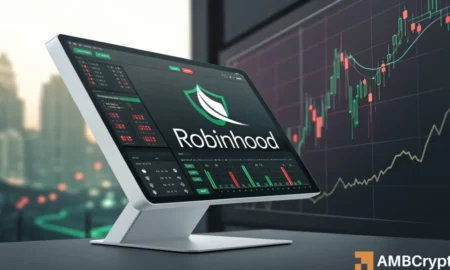Title: The Evolution of Bitcoin: From Digital Gold to Dynamic DeFi Ecosystem
Bitcoin has been traditionally regarded as "digital gold," a store of value that investors hold onto rather than actively utilize. However, a transformative shift is underway, transforming Bitcoin into a vibrant decentralized finance (DeFi) platform. This revolution is being driven by Layer 2 innovations, advancements in smart contracts, and significant interest in native yield opportunities. As a result, Bitcoin is challenging Ethereum’s long-standing dominance in the DeFi space, setting the stage for a reshaping of the cryptocurrency landscape.
In the past, the narrative surrounding Bitcoin often revolved around simply holding it as an investment. Recent developments, however, indicate a burgeoning trend towards using Bitcoin as an active asset. By January 2024, Bitcoin’s DeFi ecosystem was valued at a mere $307 million. Just a year later, that valuation skyrocketed to approximately $7 billion—an astonishing increase of 2,196%. This rapid growth not only highlights the evolving nature of Bitcoin but also underscores the untapped potential that exists within the Bitcoin market, as less than 1% of all BTC is actively participating in DeFi ventures.
Ethereum has long been the dominant player in the DeFi arena, boasting a $130 billion ecosystem. Yet, the pace at which Bitcoin is reinventing itself cannot be ignored. This evolution didn’t occur by chance; it began with the Taproot upgrade in 2021, which opened the door for the implementation of smarter scripts. The launch of Ordinals enabled data inscriptions on individual satoshis, further fueling innovation. Following this, the introduction of BRC-20 tokens and the efficient Runes protocol captivated users and miners alike, leading to an uptick in transaction fees and participation in the Bitcoin network.
Central to Bitcoin’s transformation are Layer 2 networks that are crucial in building this new frontier. Notable examples include Stacks, which has gained momentum due to its recent Nakamoto upgrade, allowing for faster settlements and the creation of sBTC—a trust-minimized version of Bitcoin intended for DeFi applications. Additionally, Rootstock employs merged mining to secure its Ethereum-compatible sidechain, while Babylon permits users to stake native BTC to bolster proof-of-stake (PoS) chains without needing to wrap or rely on bridges. These Layer 2 solutions are pivotal in fostering a robust DeFi ecosystem on Bitcoin.
As Bitcoin increasingly embraces the concepts of yield generation, the older “HODL” strategy is being scrutinized. Previously, options like wrapped Bitcoin (wBTC) on Ethereum required trust in custodians such as BitGo. In contrast, emerging native solutions aim to eliminate intermediaries, enhancing user autonomy but also introducing new risks like centralized sequencers and smart contract vulnerabilities. Additionally, regulatory bodies are lagging in understanding DeFi, with entities like the SEC and CFTC grappling for jurisdiction in the U.S., while Europe and Asia develop their own frameworks.
The sustainability of Bitcoin’s value is also on the line as mining rewards diminish with each halving. A thriving DeFi sector could provide a steady influx of transaction fees that are critical for Bitcoin’s longevity. The venture capital community is taking notice—investments in crypto reached a remarkable $16.5 billion in 2025, with a significant portion directed towards Bitcoin-focused initiatives. Bitcoin’s recognized brand and ample liquidity present a real opportunity for it to compete with and possibly dethrone Ethereum as the leading DeFi platform.
In conclusion, Bitcoin is undergoing a remarkable transformation. It is shedding its image as merely digital gold and evolving into the backbone of a new, permissionless financial system. As this evolution continues, it could unlock new potentials for a $2 trillion asset, indicating a significant shift in the cryptocurrency landscape. Bitcoin’s journey through Layer 2 innovations and DeFi engagements marks not just a pivotal change in its own identity but also a potential disruption in the wider financial ecosystem, securing its place in the future of decentralized finance.













![Will Cardano [ADA] Hit $1? – Analyzing Crucial Resistance Levels Ahead](https://icoinmarket.com/wp-content/uploads/2025/07/62336002-1096-4851-B274-A4EA1D45D138-1000x600.webp-450x270.webp)


